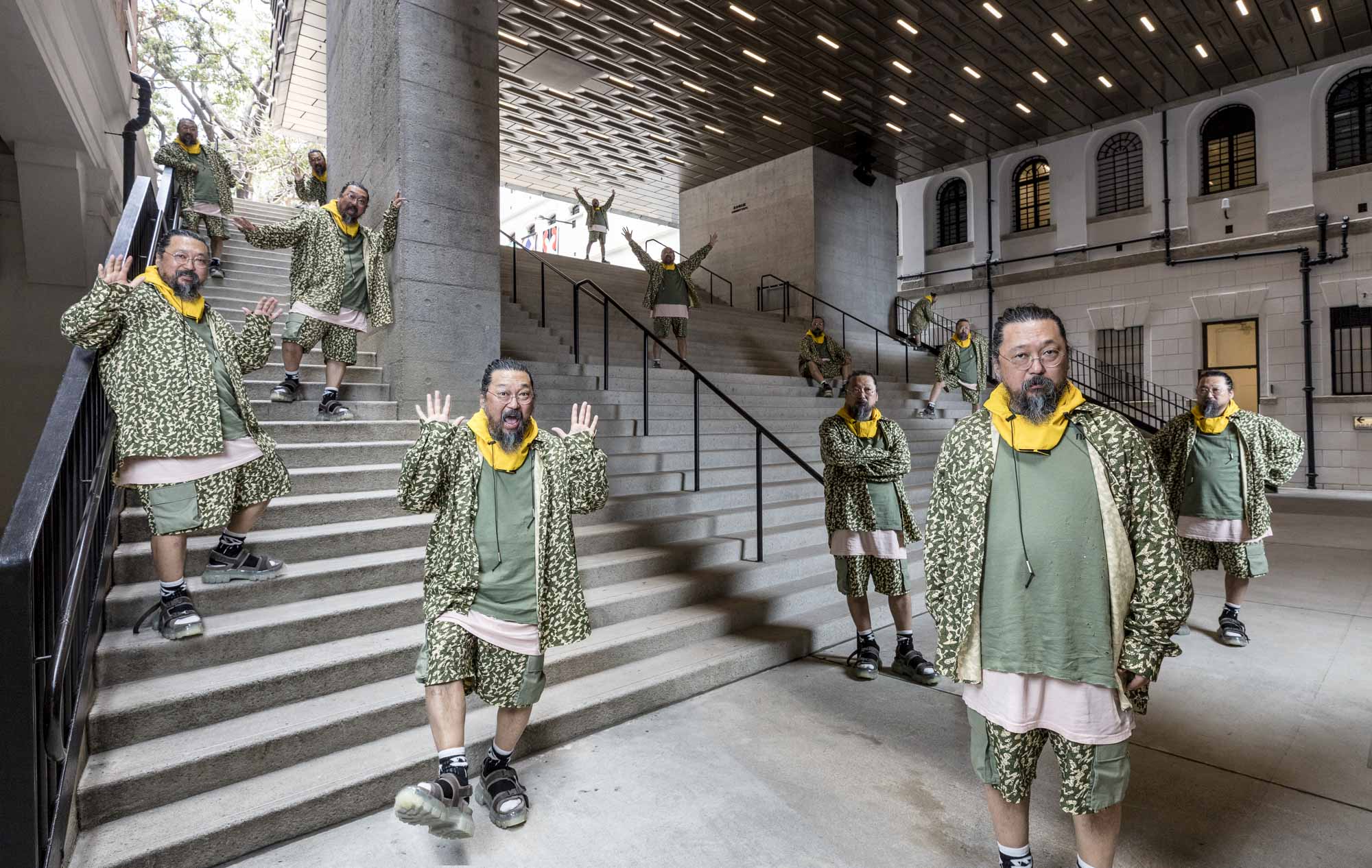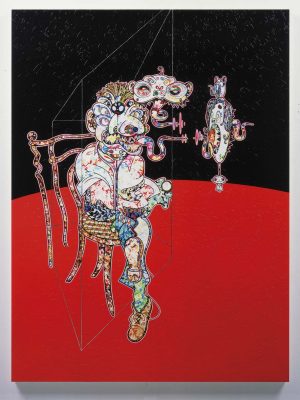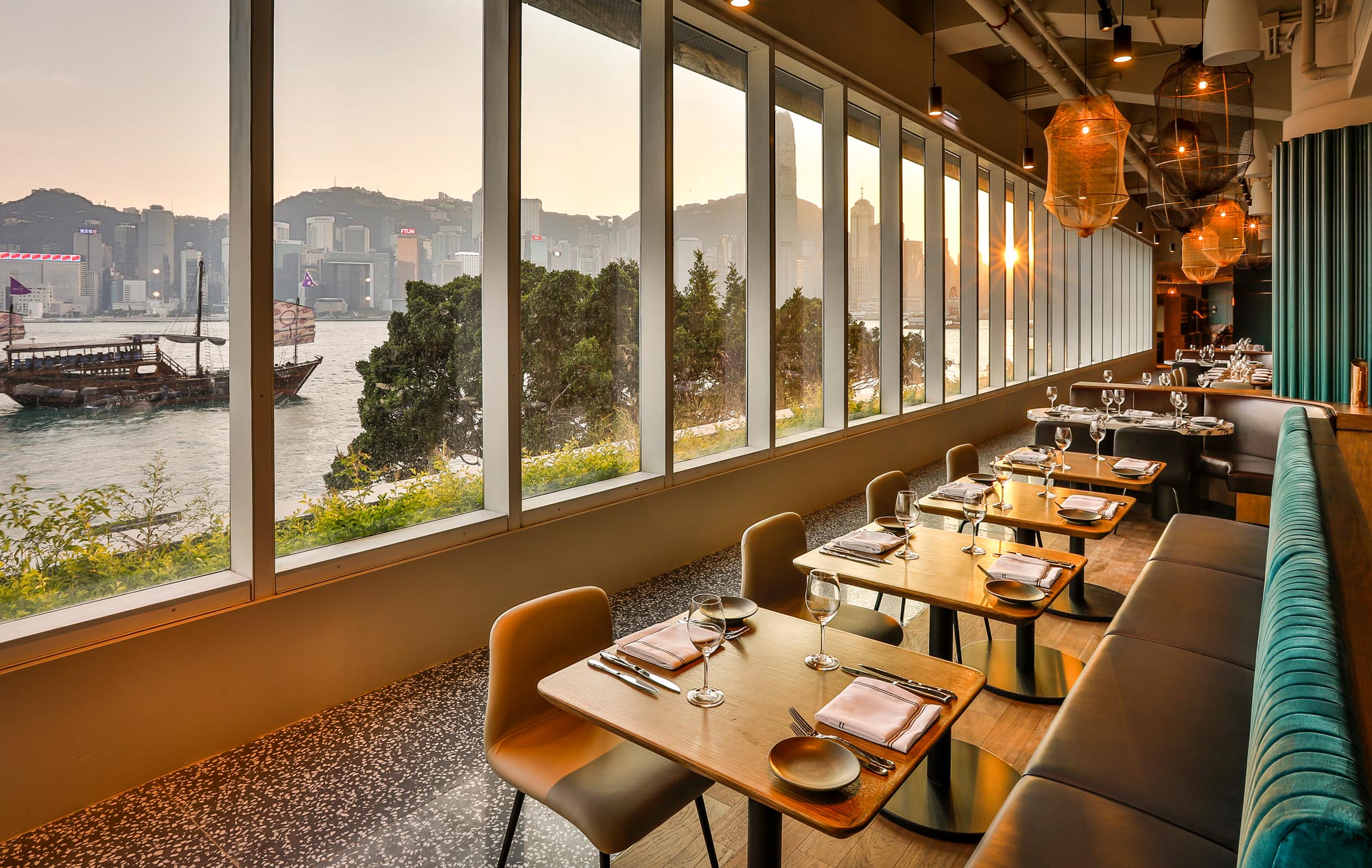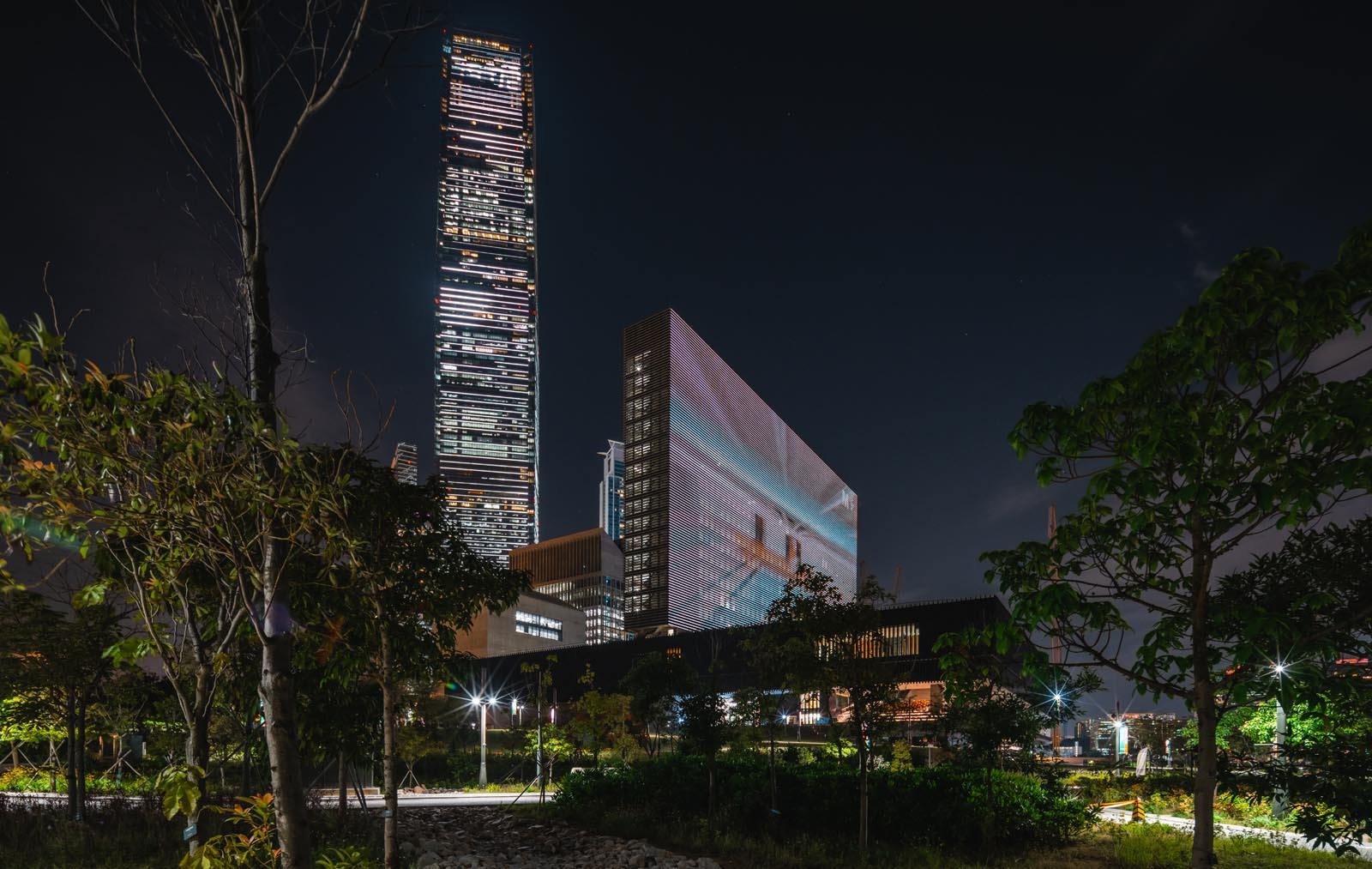The man I’m meeting is like many busy people you encounter who are spending a few days in Hong Kong on business.
He is tired. He has the usual stresses and strains of someone running a small-to-medium enterprise. HR problems. Cashflow. Travelling – lots of that. He’s looking forward to holing up in the Hyatt. It’s a hotel that provides refuge for people like him. Its ‘neighbourhood’ is the convention centre and the legislative offices. There’s no pressure to immerse yourself in the life of the city. You can just wind down.
‘I came to Hong Kong two days ago,’ he says, ‘and I could sleep for six hours. That was a very nice moment. I called room service – wow, heaven!’
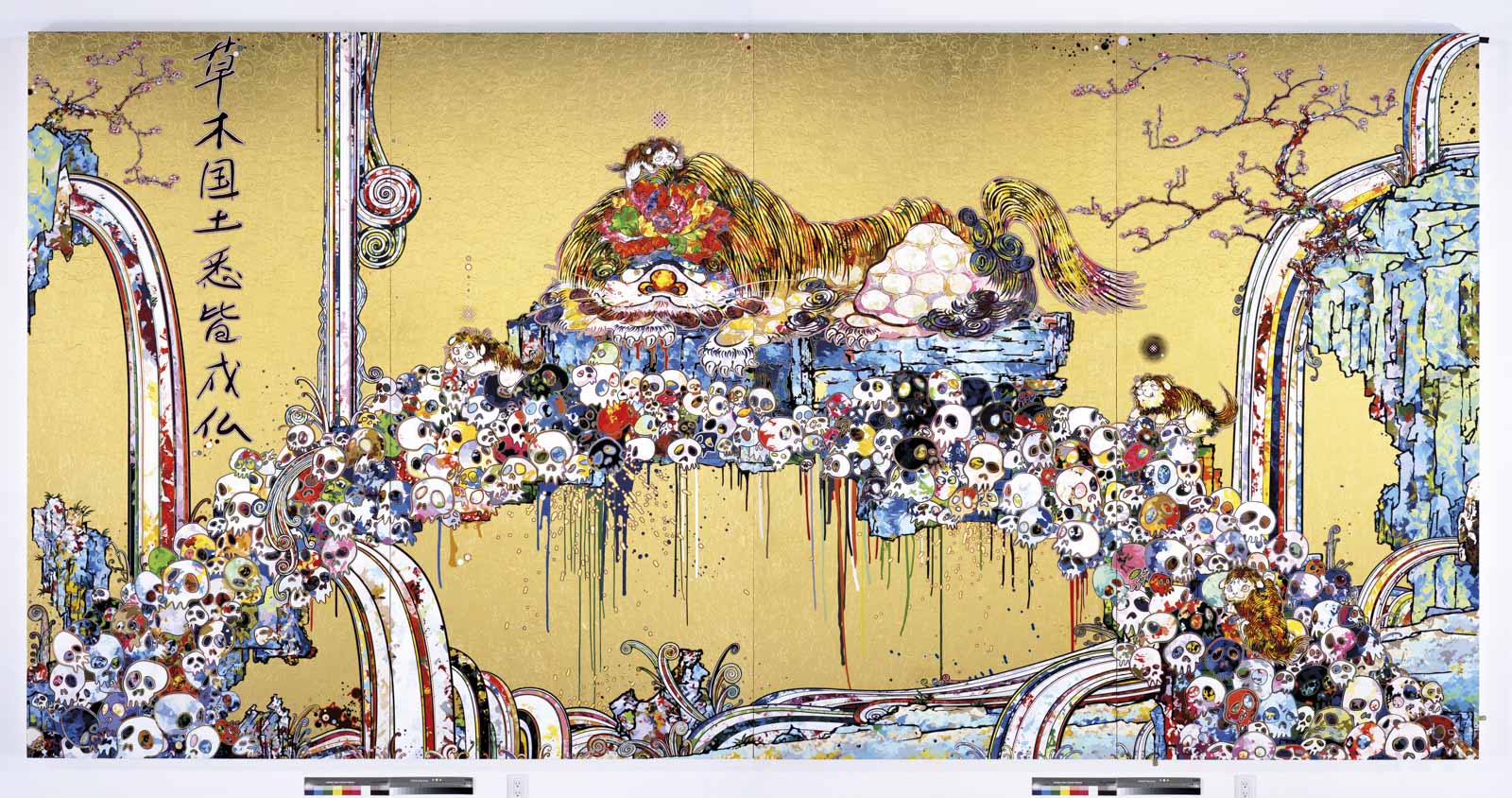
He might sound like an orthodox member of the frequent flying classes. He doesn’t look like one. True, he’s wearing a suit – but a camouflaged ensemble of shorts and jacket on top of a green-and-yellow hoodie and pink t-shirt. On his feet, he wears elephantine Velcro sandals.
The outfit is his own design. Takashi Murakami in person is a billboard for Takashi Murakami, artist-designer-entrepreneur-disruptor.
So he obediently poses for our photographer, and Vogue’s, against the artfully restored walls and passageways of Hong Kong’s Tai Kwun heritage and arts centre. We then go inside and do our interview in one of the old police cells.
I’m tempted to write that Takashi, a big personality in every sense, fills this small space originally intended for petty thieves and small-time crooks of the British colonial era. But up close, his small, round glasses and grey ponytail give him a professorial air; and he speaks softly. You feel as if you’re with a senior tutor at some distinguished university, rather than Kanye West’s artistic collaborator. When I dare to deviate from the submitted questions, he peers between his prep sheet and his translator: and then answers readily, politely – if not ever, once, straightforwardly.
Takashi was born in Tokyo in 1962. He grew up in the years of East Asia’s economic boom as Japan supplied the world with cheap toys, plastics and electronics.
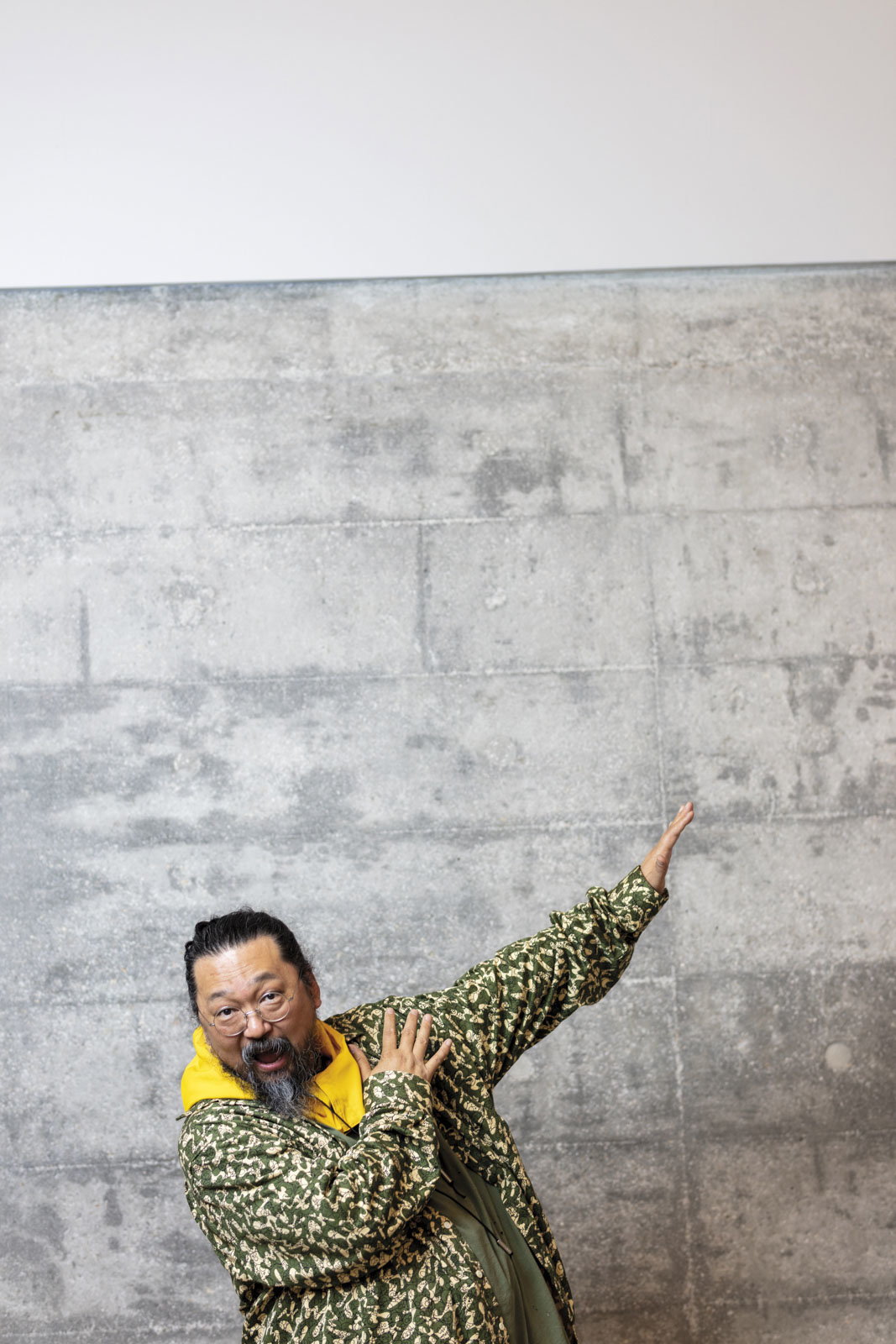
He studied animation and the traditional nihonga painting style. But as he developed as an artist in his own right, he became engrossed in Japanese ‘low art’ such as manga, as well as consumerism and the phenomenon known as otaku – geeky obsessives.
He moved to New York on a scholarship and there, in the city of Andy Warhol, set up his first ‘factory’. He also created his alter ego, a cartoon character called Mr DOB, a crazed, big-eared, razor-toothed figure who has in recent years started to morph into a friendlier kind of mascot. His multichromatic, manically smiling flowers and his densely packed skulls are equally recognisable signatures.
The ‘superflat’ movement Takashi launched in the early noughties was inspired by 2D manga and anime; but it also felt like a teasing challenge to any critics determined to find depth and meaning in his output. He continues to give them the slip. He’s collaborated with brands like Louis Vuitton and Google and been named one of the world’s 100 most influential people by Time. The art world agrees he is a Very Important Artist. They just can’t agree why.
Left: © 2012 Takashi Murakami/Kaikai Kiki Co., Ltd. All Rights Reserved; Right:© 2017 Takashi Murakami/Kaikai Kiki Co., Ltd. All Rights Reserved
Perhaps the exhibition that opens on 1 June at the JC Contemporary building in Tai Kwun will help. It’s a big thing for the centre: arguably the biggest exhibition of its short life thus far.
‘Takashi is one of the most interesting contemporary artists,’ says Tobias Berger, head of arts at Tai Kwun and one of the curators of the exhibition. ‘Having him in Hong Kong is so important.’
He emphasises, however, that the exhibition is no retrospective of the artist’s work, but something more forward-thinking. ‘We show his videos, which you never see. We show his drawings you never see. We bring in his personal collection and the stuff that really inspires him.’
The theme: Murakami vs Murakami.
‘There are so many Murakamis,’ says Berger. ‘He’s multifaceted. Takashi’s not only about flowers, and he’s not only about superflat. He also has these amazing works we’re going to show which are what I call post-apocalypse, post-Hiroshima, post-Fukushima – all these really dark moments in Japanese and international art history.’
Murakami vs Murakami: artist vs manufacturer, flower-painter vs skull-obsessive, Japanese vs internationalist, scholar vs sensationalist. You could go on.

Murakami’s own embrace of the ‘low’ arts and his obsession with the mass market has led to a tetchy relationship with the Japanese cultural establishment. We discuss the 19th century artist Hokusai – revered in the West for his tsunami woodblock print but still, says Takashi, seen as a ‘cartoonist’ in his homeland.
‘Hokusai was more entertaining. He was never thinking about longevity in his work, but Western people discovered him. For Japanese people, after he died, everybody forgot.
‘I’m still alive right now! I will be dead someday – and then, please discover me, Japanese people!’
Hokusai felt he was only nearing his prime in his 60s and 70s. Takashi, now 57, reckons his work will be ‘in a nice shape in the near future. I have a confidence now that I didn’t when I was 35. Now is completely better.’
Takashi is shifting the direction of his creative energies. He’s no longer ‘just’ an artist. He’s a gallerist representing other creators; the force behind an art studio and an animation studio; a force in the retail world. As the world changes how it sees creativity, Takashi has evolved alongside.
Entrepreneur-Owner Murakami, Marketer Murakami. Both are looking forward to Hongkongers immersing themselves in the world he has created.
‘There will be a lot of good spots to take a photo for Instagram or social media. Those coming with children can take a good photo. So please come, family people!’



